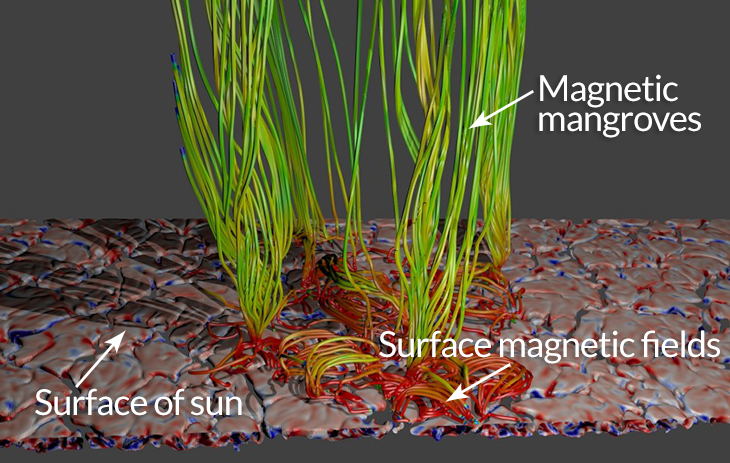Some of sun’s magnetic fields may act more like forests
Surface energy ripples up the ‘tree’ trunks and heats the corona, new study suggests

ENERGY HALO The solar corona, seen during a 2008 eclipse (colors show emissions from different iron ions), envelops the disk of the sun in this composite image.
T. Amari/École Polytechnique, S.Habbal and M. DruckMuller








